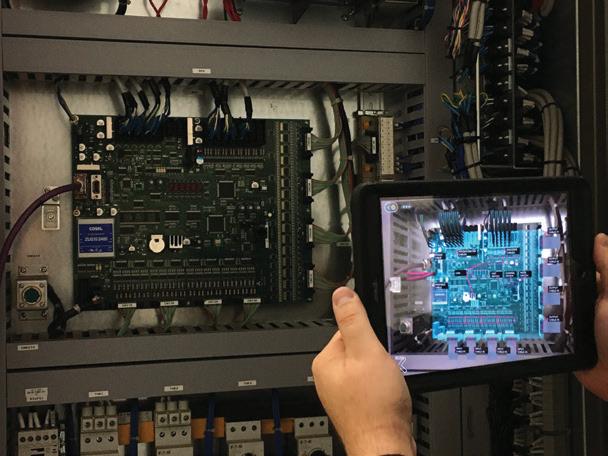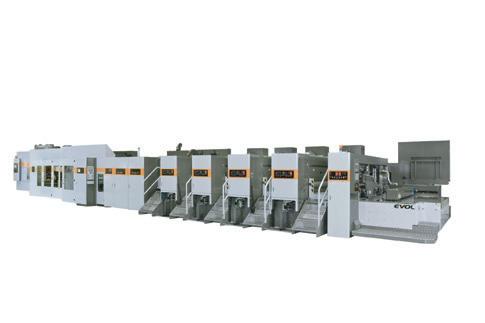
3 minute read
ASK TOM
Expected Values of Domestic Containerboard Grades: 4th Edition
BY RALPH YOUNG
Advertisement
We first researched the data and published the first edition on this subject in the March/April 2009 issue of BoxScore. Many variables have changed over the last 12 years. See the updated spreadsheets in this edition.
Looking back now, it seems as if we update and republish this information about every three years. One reason for this latest edition is that we have seen millennials and Generation Z enter the industry possibly not being aware of this technical information. A second reason is that an Associate member asked us recently for some customized Zoom webinars on edge crush test (ECT) and right-weighting, and this material is foundational to those subjects. A third reason is the increasing use of microflutes and double-wall combinations, like E/E and E/F. The fourth reason is new corrugator technology aimed specifically at small flutes, graphics, and even laminating. And maybe the fifth reason is the rapid growth in trade finishers’ shipments of small flutes, with and without labels.
The following table will list a few of the critical properties of containerboard. For a much more advanced understanding on this raw material, we point you to the digital brochure Understanding the Key Characteristics of Linerboard and Medium and Their Impact on Combined Corrugated Board. Other important characteristics of linerboard that can impact the obtainment of ECT strength are burst, short-span compression test (SCT; especially in the lighter weights), coefficient of friction, slide angle, moisture, MD/CD tensile, MD/CD tear, soft caliper, density, and porosity.
Note that we offered the strength ranges of the properties, so that you will not be misled into thinking there is only a typical average. While we originally listed the top quartile of the more common cross-direction ring crush values as the key indicator of ECT and box crush test, the industry today has overwhelmingly moved to SCT (formerly STFI).
When this data was first published, recycled linerboard was just making its entry into the market, and substances below 26# were rare, but not today.
Ralph Young is the principal of Alternative Paper Solutions and is AICC’s technical advisor. Contact Ralph directly about technical issues that impact our industry at askralph@aiccbox.org.
EXPECTED VALUES OF CONTAINERBOARDS
LINERBOARD MEDIUM (FLUTING)
GRADE SUBSTANCE #/MSF
CALIPER
mils CDRC #/lin MULLEN
18 21
25 N/A 31 N/A 23 41 N/A 26 26–29 6.7–8.4 45–46 63–86 31 HP 28–32 7.4–10.0 56–58 75–81 33 23–35 8.7–10.7 59–71 74–104 35/36 34–38 8.7–11.4 72–80 71–100 38 NR NR NR N/A 42 41–43 10.2–12.6 71–98 93–125 45 HP 42–48 11.0–13.9 93–108 90–116 52–55 HP 54–58 13.6–16.4 120–136 107–151 69 67–69 16.8–20.4 127–153 136–162 74 HP 69–75 18.1–21.7 153–168 147–163 90 88–91 22.5–26.1 162–197 161–193
*Other important characteristics of linerboard that can impact the obtainment of ECT strength are burst, STFI, coefficient of friction, slide angle, moisture, MD/ CD tensile, MD/CD tear, soft caliper, density, and porosity.
Source: AF&PA Containerboard Continous Baseline Study GRADE SUBSTANCE #/MSF
CALIPER
mils
CDRC #/lin CONCORA CFC 18 N/A 6.0–7.2 18–21 29–35 N/A 20/21 N/A 6.5–7.0 20–32 37–53 N/A 23 22–24 6.6–10.4 22–36 42–59 49–63 26 25–27 6.6–11.1 26–43 43–71 52–80 30 NR NR 39–55 50–75 NR 33 31–34 9.0–13.3 41–61 57–80 70–97 33 HP 33–41 8.8–13.8 60–82 52–85 NR 36 36 12.1–13 50–75 56–80 85–92 40 39–41 12.5–15–6 71–82 70–82 NR 45/47 N/A N/A N/A N/A N/A
POWERFLUTE
GRADE
26 UNK UNK 55 73 29 UNK UNK 69 88 31 UNK UNK 75 96 34 UNK UNK 86 109 41 UNK UNK 105 131











